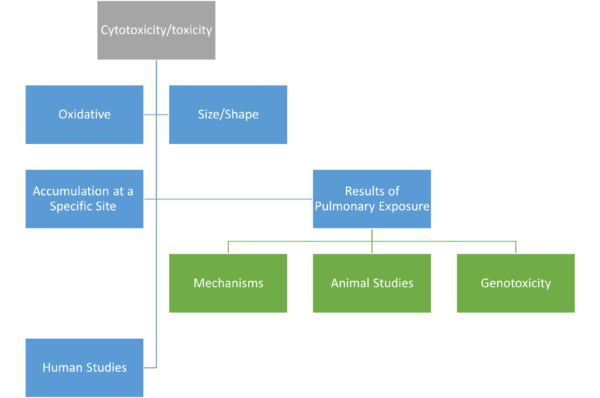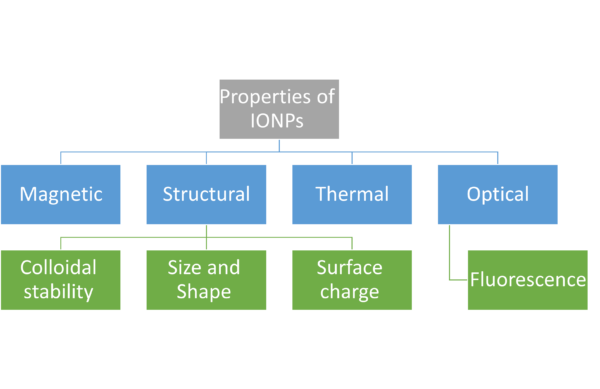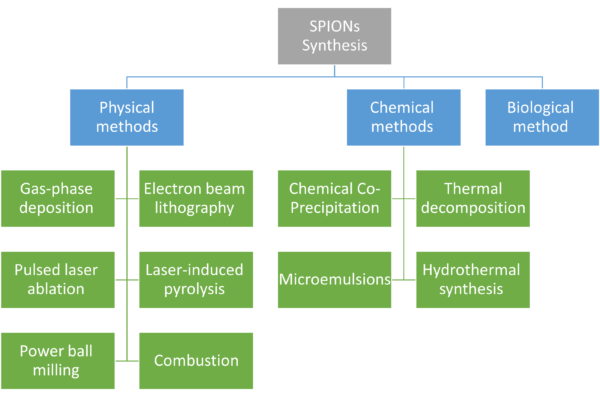توضیحات
Abstract
Magnetic iron oxide nanoparticles (MNPs) have been under intense investigation for at least the last five decades as they show enormous potential for many biomedical applications, such as biomolecule separation, MRI imaging, and hyperthermia. Moreover, a large area of research on these nanostructures is concerned with their use as carriers of drugs, nucleic acids, peptides, and other biologically active compounds, often leading to the development of targeted therapies. The uniqueness of MNPs is due to their nanometric size and unique magnetic properties. In addition, iron ions, which, along with oxygen, are a part of the MNPs, belong to the trace elements in the body. Therefore, after the cellular uptake and digesting MNPs in lysosomes, iron ions are incorporated into the natural circulation of this element in the body, which reduces the risk of an excessive storage of nanoparticles. Still, one of the key issues for the therapeutic applications of magnetic nanoparticles is their pharmacokinetics which is reflected in the circulation time of MNPs in the bloodstream. The below figure shows the topics discussed regarding the pharmacokinetics of IONPs in this chapter. The pharmacokinetics of MNPs depend on a variety of elements, including the size and charge of MNPs, the nature of the polymers and any molecules attached to their surface, and others. Since pharmacokinetics depends on the resultant physicochemical properties of nanoparticles, research should be carried out individually for all the nanostructures designed. It is crucial to keep track of developments in this area because there are new reports on the findings of studies on the pharmacokinetics of particular magnetic nanoparticles almost every year. This section discusses the latest findings in this field. The mechanism of action of the mononuclear phagocytic system and the half-lives of a wide range of nanostructures are presented. Moreover, factors affecting clearance such as hydrodynamic and core size, core morphology and coatings molecules, surface charge, and technical aspects have been described.

Pharmacokinetics of IONPs

Magnetic iron oxide nanoparticles (MNPs) have been under intense investigation for at least the last five decades as they show enormous potential for many biomedical applications, such as biomolecule separation, MRI imaging, and hyperthermia. Moreover, a large area of research on these nanostructures is concerned with their use as carriers of drugs, nucleic acids, peptides, and other biologically active compounds, often leading to the development of targeted therapies. The uniqueness of MNPs is due to their nanometric size and unique magnetic properties. In addition, iron ions, which, along with oxygen, are a part of the MNPs, belong to the trace elements in the body. Therefore, after the cellular uptake and digesting MNPs in lysosomes, iron ions are incorporated into the natural circulation of this element in the body, which reduces the risk of an excessive storage of nanoparticles. Still, one of the key issues for the therapeutic applications of magnetic nanoparticles is their pharmacokinetics which is reflected in the circulation time of MNPs in the bloodstream. The below figure shows the topics discussed regarding the pharmacokinetics of IONPs in this chapter. The pharmacokinetics of MNPs depend on a variety of elements, including the size and charge of MNPs, the nature of the polymers and any molecules attached to their surface, and others. Since pharmacokinetics depends on the resultant physicochemical properties of nanoparticles, research should be carried out individually for all the nanostructures designed. It is crucial to keep track of developments in this area because there are new reports on the findings of studies on the pharmacokinetics of particular magnetic nanoparticles almost every year. This section discusses the latest findings in this field. The mechanism of action of the mononuclear phagocytic system and the half-lives of a wide range of nanostructures are presented. Moreover, factors affecting clearance such as hydrodynamic and core size, core morphology and coatings molecules, surface charge, and technical aspects have been described.
URL: https://link.springer.com/chapter/10.1007/978-981-99-6507-6_5
نویسنده: Mohammad-Nabil Savari
5






